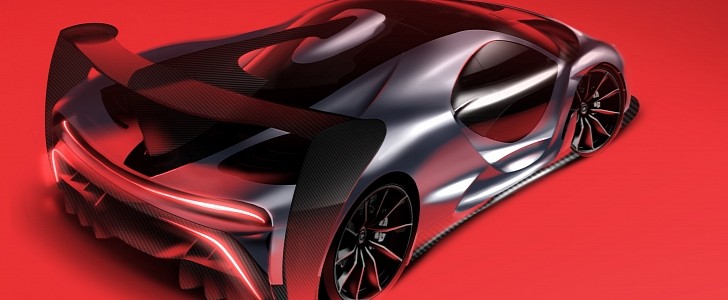McLaren and Senna are two names that need no introduction, and the same goes for when they're placed next to each other to indicate the top model from the world-renowned British supercar manufacturer.
Named after Ayrton Senna, the great Brazilian Formula One driver who lost his life in the infamous incident at Imola in 1994, the McLaren Senna is a supercar designed for uncompromised performance on the track. That means aerodynamics play a very important role, with the focus being on carrying as much speed through corners rather than flat out speed.
Don't for a moment think the 4.0-liter twin-turbocharged V8 engine and the 800 horsepower it delivers - the highest output in any available McLaren car, with the closest being the 765LT - are anything to laugh at. As it happens, the Senna was the first car to go against Ken Block's 1,400 hp Hoonicorn. Despite the huge power gap and the AWD system in the built Ford Mustang, not everyone was convinced about which way the race was going to go, which says a lot about the halo around this manufacturer in general and this model in particular.
Halo or not, if the automotive world settles on it, even McLaren won't be able to escape electrification indefinitely, which means it's either battery-powered supercars or death. While the latter isn't entirely off the table, we sincerely hope it won't be the case, and the Woking crew will find a way to continue doing what they do so well.
Here to lend a hand is Tamir Mizrahi, a transportation and industrial designer from Turin, Italy. He came up with the McLaren Senna E vision, an all-electric subtle reinterpretation of the current model that loses the three central-mounted exhaust tips but none of the car's purposeful appearance.
Granted, the exterior design is going to be the least of McLaren's problems if the transition does happen, especially since, even now, it is mostly driven by aerodynamic constraints. The real challenge will be finding a way to mitigate the unavoidable extra weight that comes with the need for a battery pack, as well as keeping it cool enough for constant power delivery under track driving conditions.
We wouldn't be surprised if the McLaren engineers found a way to do it, though. So far, they've shown they can rise to any challenge, so why should an electric powertrain be any different? Besides, hyper-performance cars will probably be the last to make the switch, so there's still time to work behind closed doors to make sure they'll be ready when the moment comes.
Don't for a moment think the 4.0-liter twin-turbocharged V8 engine and the 800 horsepower it delivers - the highest output in any available McLaren car, with the closest being the 765LT - are anything to laugh at. As it happens, the Senna was the first car to go against Ken Block's 1,400 hp Hoonicorn. Despite the huge power gap and the AWD system in the built Ford Mustang, not everyone was convinced about which way the race was going to go, which says a lot about the halo around this manufacturer in general and this model in particular.
Halo or not, if the automotive world settles on it, even McLaren won't be able to escape electrification indefinitely, which means it's either battery-powered supercars or death. While the latter isn't entirely off the table, we sincerely hope it won't be the case, and the Woking crew will find a way to continue doing what they do so well.
Here to lend a hand is Tamir Mizrahi, a transportation and industrial designer from Turin, Italy. He came up with the McLaren Senna E vision, an all-electric subtle reinterpretation of the current model that loses the three central-mounted exhaust tips but none of the car's purposeful appearance.
Granted, the exterior design is going to be the least of McLaren's problems if the transition does happen, especially since, even now, it is mostly driven by aerodynamic constraints. The real challenge will be finding a way to mitigate the unavoidable extra weight that comes with the need for a battery pack, as well as keeping it cool enough for constant power delivery under track driving conditions.
We wouldn't be surprised if the McLaren engineers found a way to do it, though. So far, they've shown they can rise to any challenge, so why should an electric powertrain be any different? Besides, hyper-performance cars will probably be the last to make the switch, so there's still time to work behind closed doors to make sure they'll be ready when the moment comes.







